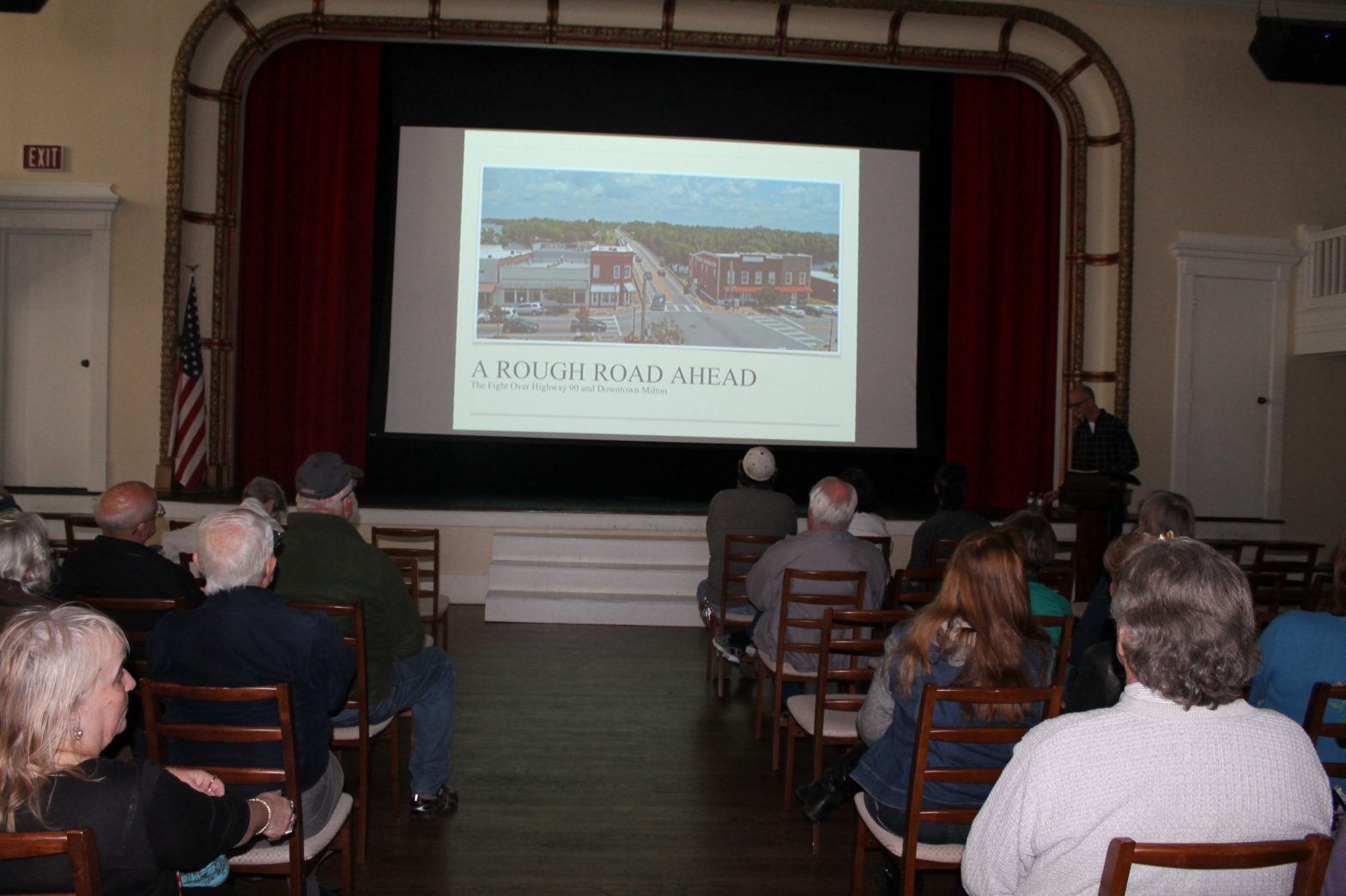
Sunday, after its regular meeting, the Santa Rosa Historical Society held a talk on the Florida Department of Transportation’s study into alleviating traffic congestion in downtown Milton at the Imogene Theatre. President Vernon Compton presented with a question and answer period afterwards.
Compton began with a history of the traffic situation on Highway 90 through downtown, including articles dating back to 1959 in the Press Gazette, the collaboration between the SRHS and nonprofit Main Street Milton on the Marquis Bayou Bridge, preservation of the Fisher Hamilton Building, and Milton’s inclusion on the Florida Trust for Historic Preservation’s 11 Most Endangered Historic Sites.
Compton’s focus of the presentation centered on the possible effects of widening Highway 90, one of FDOT’s options in its study. Choosing this option, Compton said, could result in the demolition of the 137 year old Fisher-Hamilton building on the south side of the bridge downtown. While he said the Imogene Theater may not see demolition or some other change with widening Highway 90, the additional traffic, he said, could impact historic buildings through the additional vibration. Noise, he also said, would affect business in the area.
A notable quote, Compton mentioned at the end of the presentation came from New York based nonprofit Project for Public Spaces saying, “When you plan for cars and traffic, you get cars and traffic…when you plan for people and spaces, you get people and spaces.”
Compton also used similar existing scenarios such as Mt. Dora, Florida and a Wisconsin Department of Transportation study. In 1957, he said, Mt. Dora citizens fought four-laning the main road through its downtown, opting for a bypass. The city, he said, is thriving and retained its core.
“Over 1 million visitors a year [visit] Mt. Dora partly due to this decision,” he said. As to the WDOT study, looking at 17 bypassed communities, he said it found negative impacts of bypassing (routing traffic around downtowns) are rare.
The effects to business, as well as historic buildings, were another concern Compton addressed. From the WDOT study, he said most retail businesses in the bypassed communities did not move from their locations and new ones appeared, choosing to locate near established businesses, not on the bypass route.
Another arm of Compton’s economic argument was historic tourism. He said historic neighborhoods draw new residents, maintain property values better than new construction, and attract small business with more diverse rent.
Safety was another key facet in Compton’s argument. He also said widening Highway 90 would not only increase traffic but speeding, an incongruent situation for pedestrian traffic. With the current two-lane road and low traffic speeds, he said there are still accidents downtown and pointed out several including a vehicle hitting a crape myrtle tree, which could have significantly damaged the Santa Rosa Warehouse, not to mention a pedestrian.
This article originally appeared on Santa Rosa Press Gazette: SRHS argues against widening Highway 90
